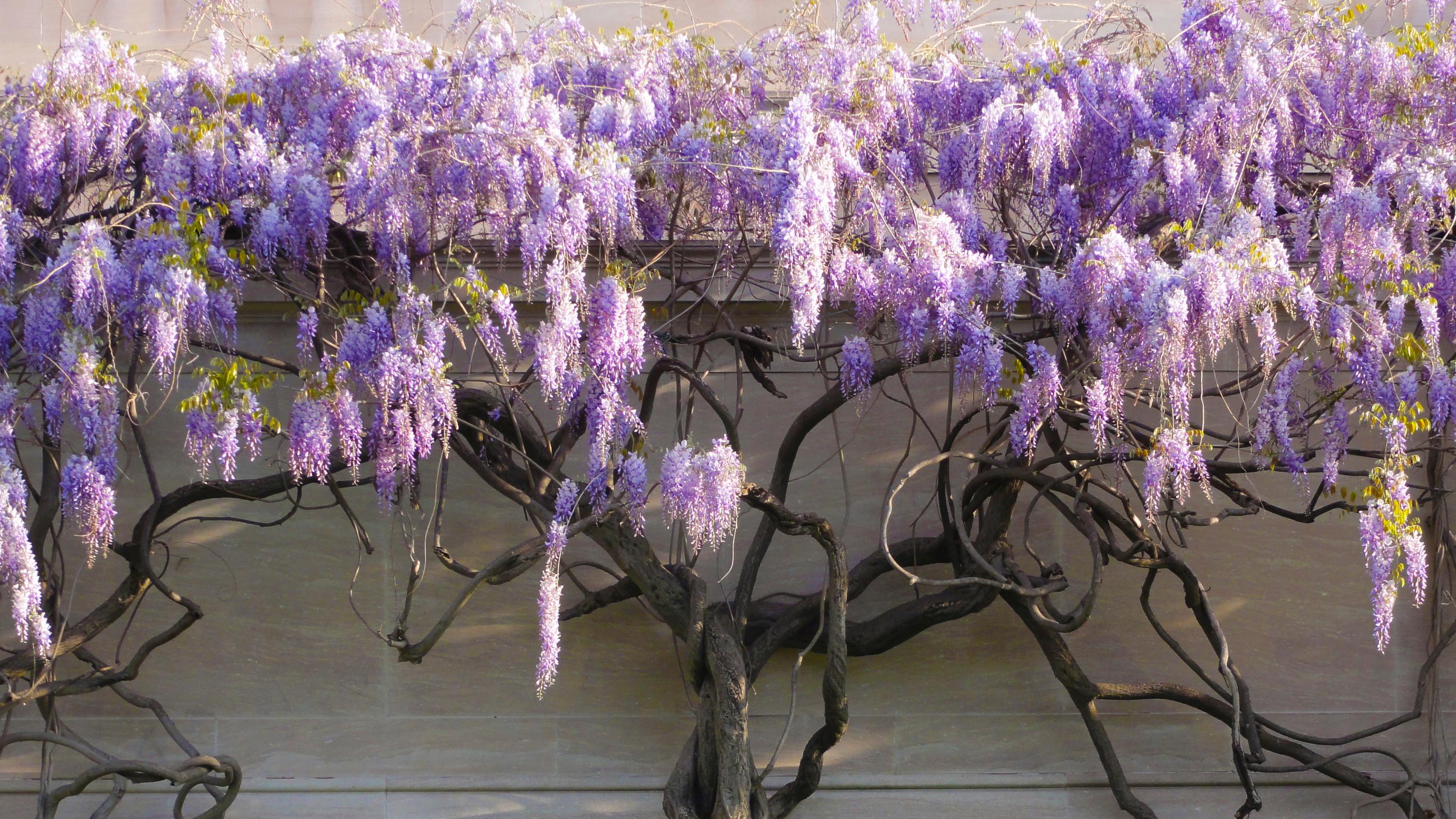Vines

Vines are usually grown for a purpose: to cast shade over an arbor, hide an unattractive chain link fence, or splay out over a hillside. If you're considering adding a vine to your garden, it is critical that you know its ultimate size. Some vines grow shockingly fast and long – and are devilishly difficult to remove. Don't let a vine take over your garden! Also, to maintain a fire-smart landscape, avoid growing vines directly on your house.
Use our lists of:
> LARGE VINES for covering broad areas and or
> SMALL VINES that are more manageable and less likely to become a problem.
Before you choose, get familiar with the various ways that vines grow.
Vines with tendrils are grabby
Tendrils are thin, flexible, leafless stems. They grow straight until they connect with something they can grasp, such as a trellis, chain link fence, or the stem of another plant. As soon as contact is made, tendrils wrap around the support. If the support is too thick, the vine will start to attach to its own stems. Although some twining vines, like pink jasmine (Jasminum polyanthum), don’t grow excessively long, their tangle-prone tendrils will reach out and grab anything and everything. This includes wrapping around house shingles or creeping under wood siding.Vines that climb by tendrils include grape (Vitis) and sweet pea (Lathyrus odoratus).

If you've ever seen a brick building covered in Boston ivy (Parthenocissus tricuspidata), you know what a clinging vine looks like. These vines adhere to any flat surface. Some, like Boston ivy, have tendrils with little suction cups at the end. Others, like trumpet vine (Campsis), have aerial rootlets that love masonry and rough- textured wood. Be careful with clinging vines. They can destroy walls with wood or composite siding.

These vines are aimless. They grow long vertical stems but have no way of attaching. Without a manmade support, they scramble all over themselves or neighboring plants. Examples include Bougainvillea and climbing roses, which use thorns to hook onto neighboring plants or structures. Scrambling vines need your help. To keep them from turning into tangled messes, construct a simple support system such as wire or lattice attached to a wall. Simply tie the vine to the support.
